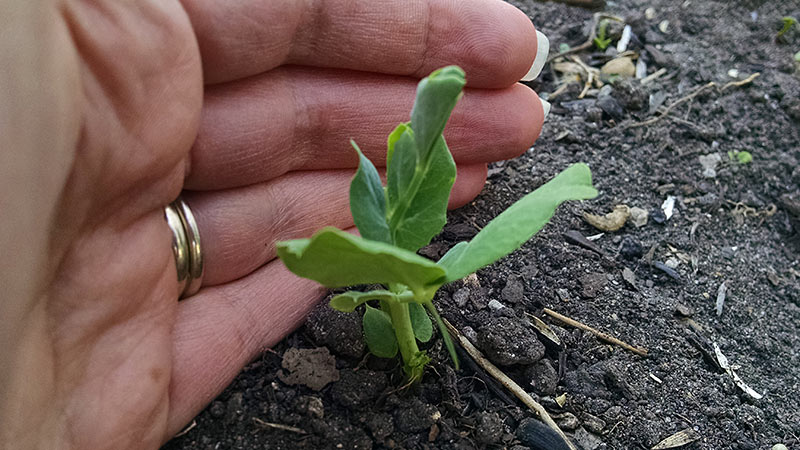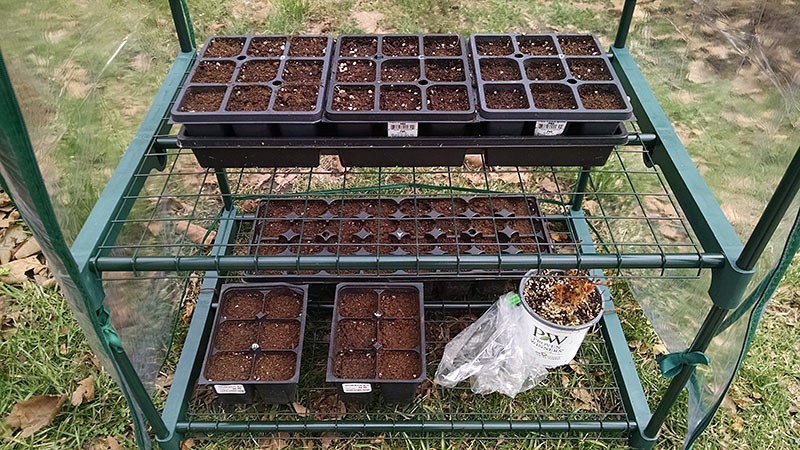I’m not sure how to explain what was happening today at the bird feeder in the back garden. On the Lot, we have a site line from our kitchen window into the middle of the back garden. The Other Half and myself enjoy watching for birds visiting throughout the seasons. We enjoy it enough our friend Ms. A purchased us a backyard bird ID guide.
Across the backyard near the garage we have a tray feeder for sunflower seeds, a hanging feeder for jams and fruit, and a suet cage. Right outside the kitchen window we’ve hung a thistle seed feeder on one side and a suet feeder on the other. The thistle seed feeder is often crammed full of American Goldfinch (Spinus tristis), both to our delight and the four-footed management’s frustration. The little roof at the top of the horizontally hung suet feeder ensures the suet is reserved for woodpeckers, nuthatches, and any other bird willing to cling upside down to enjoy the feed. We usually find the downy woodpecker (Dryobates pubescens ) grabbing a meal.
Anyway, back to today. I had left my office and walked downstairs to refill my coffee mug. I always like to look out our window into the garden to see who is at the feeders. A normal day will bring the goldfinches, house finches (Haemorhous mexicanus), woodpeckers, northern cardinal (Cardinalis cardinalis ), recently a pair of black-capped chickadees (Poecile atricapillus) , mourning doves (Zenaida macroura ), and a whole load of house sparrows (Passer domesticus).
But today was different. Hopping around on the ground below the feeder was a rose-breasted grosbeak (Pheucticus ludovicianus)! I have NEVER seen this bird in the back garden since we moved here just over ten years ago. Mom G has loads of them in her garden 2 hours north of the Lot. It was a juvenile male, but still quite pretty.
I excitedly texted the Other Half to tell him the news. When I looked up again, there was yet another bird I had never seen at our feeder! It was a block of the prettiest gray, with a slightly darker gray cap and narrow, pointy beak. Some minutes spent with the ID book helped me to identify the bird as a gray catbird (Dumetella carolinensis).
Returning to my desk for work, I felt giddy with having witnessed these new visitors to the back garden. As mentioned many times before in this digital journal, one of the reasons I garden is for wildlife. Even if they were passing through for migration, I was happy to have created a space the birds could stop in and grab a bite.
Lunch time rolled around and I headed back down to the kitchen to get a meal of my own. I about fell over when I looked out the back window. Four adult male rose-breasted grosbeaks and one female were at the feeders. One of the males flew right up to the back window to take a try at the finch feeder. Also, hopping around on the ground below the feeder were several white-crowned sparrows (Zonotrichia leucophrys ). This is a bird who has visited before, but often is only here a short time as they make their way north to Canada.
And then, as if this bombardment of diverse birds all in one day wasn’t enough, I spotted it. A baltimore oriole (Icterus galbula). I have tried every. single. spring. since living here to get this bird to visit the Lot. I ever-so-slowly reached into the kitchen drawer for the binoculars we keep there and took a closer look at it. Yes! It was an oriole!!! The recently sought after advice from Sister G had paid off.
When I again texted the Other Half, his reply was “Now you’re just making stuff up”. At least when he got home tonight he was able to see a Ms. and Mr. grosbeak. The whole experience was fantastic and I can’t wait to see what this season brings with our feathered friends.







